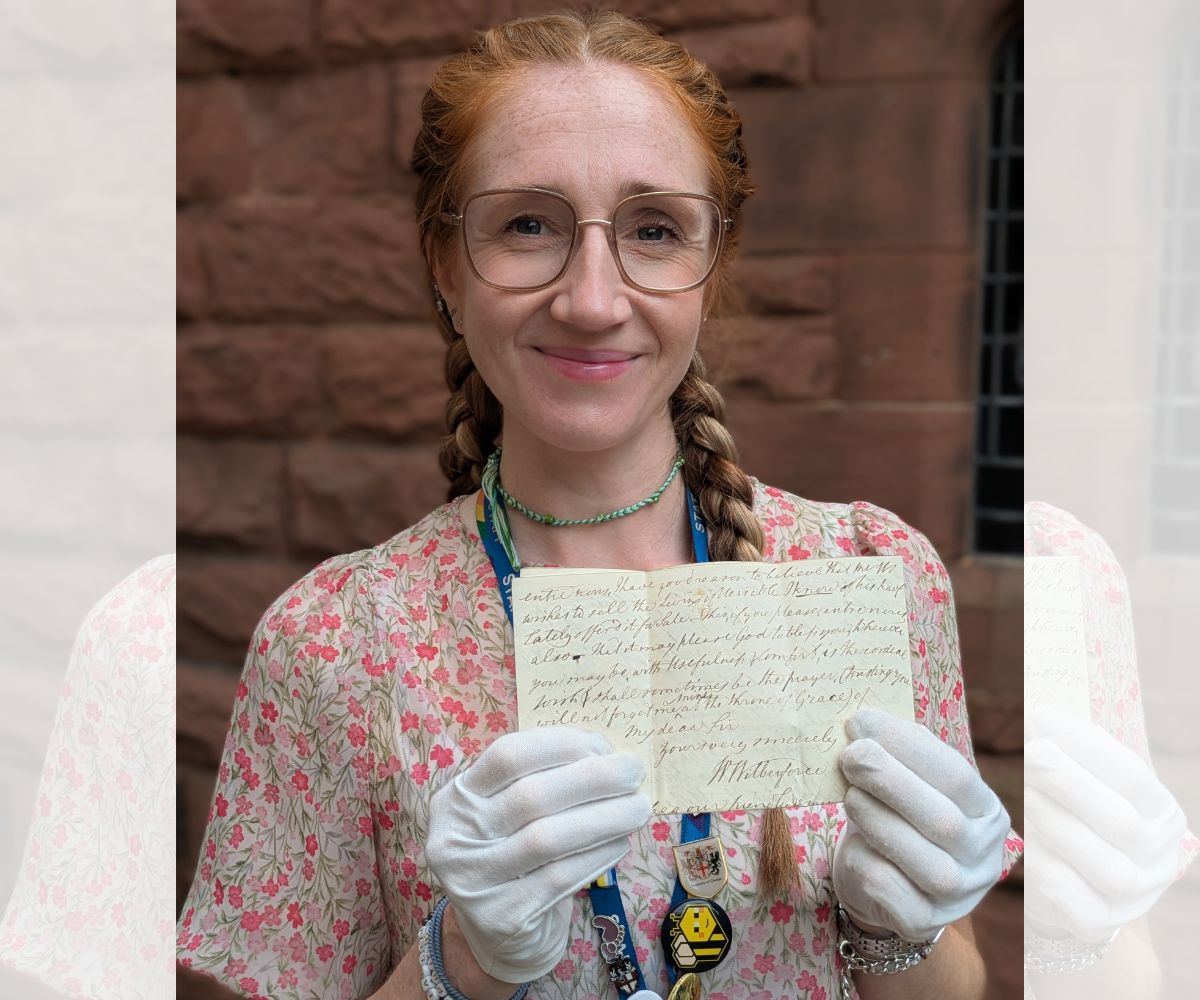Fascinating historical find uncovered in University archives
Letters penned by renowned anti-slavery campaigner William Wilberforce have been discovered in the University of Chester archive collection.

While working on the new University alumni archive recently, staff found four letters dating from the early 19th century, including two written by Wilberforce.
The letters were sent by Wilberforce to the Rev Henry Raikes, son of his close friend Thomas Raikes, who was Governor of the Bank of England between 1797 and 1799.
Henry Raikes was appointed Chancellor of the Diocese of Chester by his friend Bishop John Bird Sumner and was one of six founders of the Chester Diocesan Training College, which later became the University of Chester.
In his letters, dated 1830, Wilberforce discussed his efforts to build a chapel near his Highwood Hill home in Middlesex.
The other two letters date from 1808 and 1809; one is to Henry Raikes from his uncle and the other is to Thomas Raikes from his brother.
They were uncovered as part of a project to organise and develop the University archive led by Alumni Assistant, Amy Hultum, with support from Dr Lisa Peters. The project is bringing new light to alumni donations of memorabilia from their time at the University and wider artefacts that have been in storage, some for decades.
On the discovery of the letters, Amy said: “We did not expect to come across anything like these letters but we were very excited to find them in a box amongst our University collections.”
Dr Hannah Ewence, Head of Humanities, Cultures and Environment at the University explained more about Wilberforce and his motivations at the time of writing: “These two letters, between William Wilberforce and his friend and fellow Evangelist Henry Raikes, were written towards the end of Wilberforce’s life. The campaign which had dominated Wilberforce’s political career - the abolition of the slave trade - had achieved the momentous milestone of prohibiting the buying and selling of slaves within the British Empire, in 1807. The abolition of the trade itself would not be realised until 1833; the year of Wilberforce’s death.
"By 1830, failing health had caused Wilberforce to retire from politics and from London life, moving from Grove House in Brompton to the relative tranquillity of Mill Hill, Middlesex (now in the north London borough of Barnet). It was from Highwood House that Wilberforce sat down to pen his replies to Raikes, then Chancellor of the Diocese of Chester. Their affectionate correspondence ranged across personal, political and spiritual matters, and offers a sense of the paternal regard in which Wilberforce held the younger man. Certainly, his efforts to persuade Raikes that he should take a living as curate in Mill Hill because he knew him to be “a promotor of peace and good will” reveals that Wilberforce’s reputation for showing great care for friend and stranger alike had not diminished, even in his final years.”
She added: “It is somewhat tragic that Wilberforce’s ambitions to construct a chapel at his Middlesex home - a key discussion point within the letters - were not realised during his residence there. By the end of the year, the catastrophic failure of his eldest son’s commercial venture into the diary business presented Wilberforce with few options except to let Highwood House. Thereafter, Wilberforce became somewhat nomadic, living out his final years between his children’s homes in Kent and the Isle of Wight, and the hospitality of friends.”
Wilberforce died in July 1833 and was buried in Westminster Abbey. The chapel that he dreamt of building at Mill Hill was consecrated that same year.
Any former University of Chester students who would like to donate memorabilia such as photos, event programmes and lecture notes from their time studying at any site, to add to the collection, are asked to contact: alumni@chester.ac.uk
ENDS
Image: University of Chester Alumni Assistant, Amy Hultum, showing William Wilberforce’s signature at the end of one of his letters to Henry Raikes.